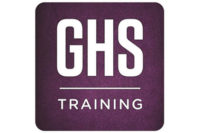The proposed GHS-specific revisions include both philosophical and tactical changes to hazard communications, which have far-reaching implications for MSDS authoring, publishing, distribution and management of labels. Downstream users of hazardous materials will face a significant employee training/re-training requirement, as new classification terminology, risk and safety determinations, hazard symbols, and product labels will be subject to change. Increasing the difficulty will be an estimated three-year transition period in which both the older MSDS versions (non-GHS compliant) and newer GHS compliant versions will be acceptable for use.
The proposed OSHA GHS rule calls for an updated and expanded version of the MSDS, with new information on:
- Firefighting measures
- Accidental release measures
- Handling and storage
- Exposure controls/personal protection
- Stability and reactivity
- Toxicological information
- Ecological information
- Disposal considerations
- Transport information
- Regulatory information
Prepare for success
With these significant changes looming on the horizon, how does one prepare? A comprehensive review and outline of current compliance programs and processes, as well as pending corporate initiatives is the starting point. This information can be gleaned from a variety of sources, including from chemical inventory and existing MSDS management processes and tools. The reviewer should cover MSDS obtainment and renewal; access to data and documents, including on employee level and on an EHS professional level; access to substance level data, regulatory content and transportation data; regulatory impact and analysis processes, including import/export; chemical approval processes and resource capabilities and requirements.
To simplify the collection, extraction, integration and management of this data, many organizations have proactively linked their MSDS management system to a broader Environmental Management Information System (EMIS) that can be leveraged across the supply chain. MSDS management, once a tedious, unilateral clerical exercise, is fast becoming an integral part of an EMIS that impacts a broad range of EHS professionals to include safety management, industrial hygiene, product stewardship, R&D, environmental compliance, transportation and risk management.
Choose the right solution
When developing your chemical inventory management program, consider a variety of factors, including the number of sites, your inventory of hazardous materials (including pure chemicals, raw materials, intermediates, use chemicals and finished products), applicable agency requirements (such as workplace safety, environmental and community safety, transportation and waste management), any required global multilingual capabilities, and internal stakeholder process and data requirements.
Define a rating system (or checklist) that enumerates critical capabilities and itemizes best practices. Be on the lookout for opportunities to automate manual process and minimize training requirements. Seek out solutions that streamline data collection and regulatory research offering complex integration of multiple data sources, leaving more time for compliance analysis. Ensure that all proposed programs review and update data sources on a scheduled basis that is in keeping with jurisdictional requirements.
Build the right program
When sourcing/developing a chemical inventory management system, you should look for a program that offers:
- Information indexed directly from the MSDS
- Interpretive storage, transportation and/or waste classifications
- Expanded search capabilities
- List generation of regulated ingredients and products
- Expanded regulatory content
- Ability to incorporate other regulatory or internal documentation
- Data integration with enterprise systems
- Management of Change features to include chemical approval workflows, new/revised product notifications and regulatory alert
- Requirements vary by industry, company size, areas of operation, number of hazardous chemicals, and a host of other criteria. Compile a list of program objectives that this system should achieve when fully implemented.
Solution options — Vendor selection
There are a few common misconceptions about MSDS management solutions. One size does not fit all, and cheaper is not better. It is important to remember that solution components do not need to be purchased and activated simultaneously, and that outsourced solutions will not eliminate the need for IT Support (critical to the vendor approval process and during many implementation phases) or back office and administrative support.
When considering a full-service program versus a do-it-yourself application, keep in mind that a host of vendors offer what appear to be less expensive alternatives. The hook is enticing, as reducing expenses is extremely attractive, especially in this economy.
When searching for an MSDS management vendor, reference the following checklist:
- Do your homework thoroughly — the implementation of this program is likely one of the most important and impactful decisions your company will make
- Analyze your internal data and performance requirements from a full EMIS (organizational and supply chain) perspective
- Determine and compare vendor capabilities
- Understand your organization’s role and resource requirement in a vendor partnership
- Get what you need today, avoid what you don’t need right now, and add what you need, when you need it
- Ask for SoWs, KPIs and implementation timelines
- Ensure vendors under consideration have implemented a QMS (Quality Management System) that includes customer concern processing with documented corrective action procedures
- Find out if your outsource provider sub-contracts their services (on and offshore)
- Determine if you are billed annually, transactionally, or both
- Check references
- Take advantage of structured bidding processes
Producing accurate and compliant MSDSs and labels can be a daunting task, especially with the introduction of regulations as a complex as OSHA’S GHS. Conformance will require strong processes, applications, EHS experience, and dedicated support. This can be particularly challenging for companies with limited budgets and resources, but companies can also seek assistance from service providers who are well-versed in MSDS management as it relates to global EHS regulations.


